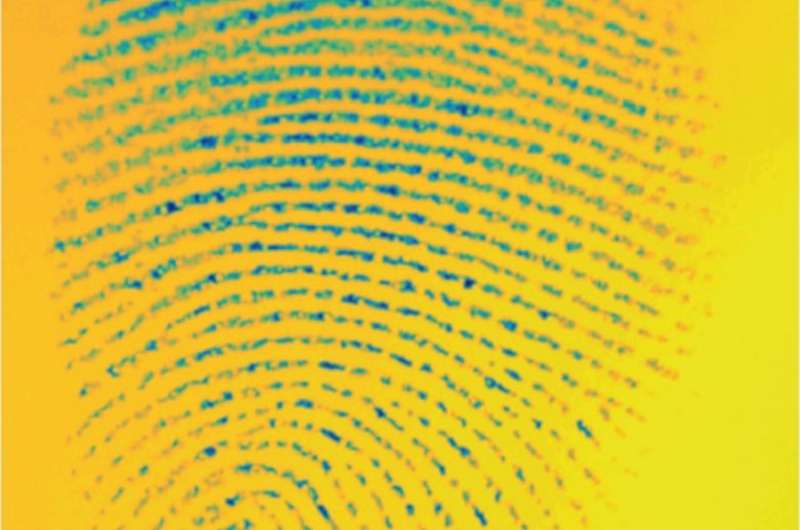September 26, 2017 report
Fingertips found to respond differently to different surfaces

(Phys.org)—A team of researchers from the University of Birmingham, Sorbonne Universités and Unilever Research & Development Port Sunlight, has found that human fingertips behave differently when touching something depending on the type of surface they touch. In their paper published in Proceedings of the National Academy of Sciences, the group describes experiments they conducted with volunteers and high-speed cameras and what they found.
Using our hands or just our fingers comes mostly naturally to most people. We tend to focus more on what we are trying to achieve rather than how it comes about. This is because nature has provided us with equipment that has some degree of autonomy. Our fingertips, as the researchers found, react automatically when we touch something, which offers the most possible benefit.
To learn more about how our fingertips work, the researchers asked two volunteers to touch and press different objects while the researchers filmed the action with a high-speed camera. They discovered that our fingertips secrete a very small amount of sweat when we touch something hard and smooth, like a pane of glass. The skin on the fingertips, they found, is rather hard in its natural state, but when we touch something, like a touch screen, the nerves in the fingers sense that hardness and sweat is produced. That sweat is then absorbed into the skin, softening it. This allows the hills of our fingerprints to yield to pressure, flattening a little, allowing more surface area contact. The whole process helps to handle hard surfaces in desirable ways—like holding onto a glass of water that would otherwise slip from our grasp. But, the team also found that it does not happen instantaneously—it took up to 20 seconds for the skin to soften, depending on factors such as the hardness of material and differences between people.
In contrast, the researchers found that when a fingertip comes into contact with something like a rubber surface, the flexibility of that surface conformed to the fingertips, reaching down into the valleys of our prints, and thus no softening of the skin was needed.
More information: Why pens have rubbery grips Brygida Dzidek, Proceedings of the National Academy of Sciences (2017). DOI: 10.1073/pnas.1706233114 , www.pnas.org/content/early/2017/09/19/1706233114
Abstract
The process by which human fingers gives rise to stable contacts with smooth, hard objects is surprisingly slow. Using high-resolution imaging, we found that, when pressed against glass, the actual contact made by finger pad ridges evolved over time following a first-order kinetics relationship. This evolution was the result of a two-stage coalescence process of microscopic junctions made between the keratin of the stratum corneum of the skin and the glass surface. This process was driven by the secretion of moisture from the sweat glands, since increased hydration in stratum corneum causes it to become softer. Saturation was typically reached within 20 s of loading the contact, regardless of the initial moisture state of the finger and of the normal force applied. Hence, the gross contact area, frequently used as a benchmark quantity in grip and perceptual studies, is a poor reflection of the actual contact mechanics that take place between human fingers and smooth, impermeable surfaces. In contrast, the formation of a steady-state contact area is almost instantaneous if the counter surface is soft relative to keratin in a dry state. It is for this reason that elastomers are commonly used to coat grip surfaces.
Journal information: Proceedings of the National Academy of Sciences
© 2017 Phys.org




















